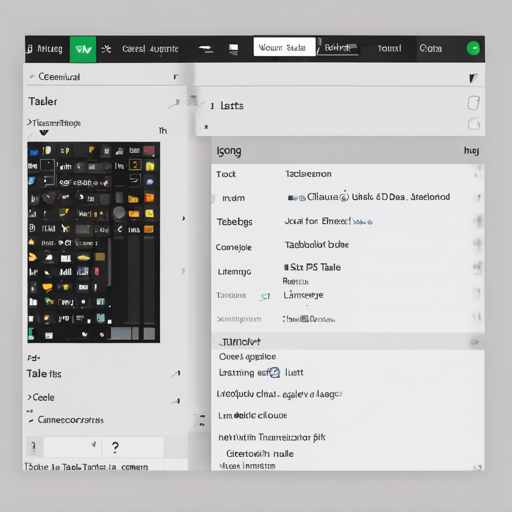Building user interfaces that feature organized data displays is essential for any application. Whether you’re developing in Android or using JavaScript in Windows 10, you’ll need to master two critical components: tables and ListViews or ArrayLists. This guide will walk you through the process of creating these components in a user-friendly manner.
Getting Started
Before diving into the code, ensure you have the necessary setups on your Windows 10 environment:
- For Android: Install Android Studio and set up a virtual device.
- For JavaScript: Use a code editor like Visual Studio Code and ensure you have a web browser for testing.
Creating a Table
Creating a table is like setting up a neatly organized bookshelf, where every item (or data) has its spot. In both Android and JavaScript, you can utilize libraries and components to render tables effectively.
Using Android
In Android, you can use RecyclerView to create a list-like table. Here’s a basic example:
RecyclerView recyclerView = findViewById(R.id.recycler_view);
recyclerView.setLayoutManager(new LinearLayoutManager(this));
recyclerView.setAdapter(new MyAdapter(myDataset));
Using JavaScript
In JavaScript, you can implement tables using HTML and style them with CSS. For instance:
Name
Age
John Doe
30
Using ListView or ArrayList
ListViews in Android or ArrayLists in JavaScript are crucial for displaying lists of data. Think of it like a phone contact list, where each entry is a separate entity you can click to view more details.
Using Android
Setup a ListView using the following code:
ArrayList myArrayList = new ArrayList<>();
myArrayList.add("Item 1");
myListView.setAdapter(new ArrayAdapter<>(this, android.R.layout.simple_list_item_1, myArrayList));
Using JavaScript
In JavaScript, you can create a dynamic list using an Array. Here’s an example:
const myArray = ['Item 1', 'Item 2', 'Item 3'];
myArray.forEach(item => {
document.write(`${item}
`);
});
Troubleshooting Tips
If you encounter any issues while implementing these components, consider the following:
- Double-check your syntax for any errors.
- Ensure that your layout files reference the correct IDs.
- Look for runtime errors in the console or logcat outputs.
- Refer to the official documentation for additional insights.
For more insights, updates, or to collaborate on AI development projects, stay connected with fxis.ai.
Conclusion
Building tables and lists is essential for effective data presentation in your applications. With the discussed methods and examples, you’re well on your way to mastering these UI components in Android and JavaScript.
At fxis.ai, we believe that such advancements are crucial for the future of AI, as they enable more comprehensive and effective solutions. Our team is continually exploring new methodologies to push the envelope in artificial intelligence, ensuring that our clients benefit from the latest technological innovations.

